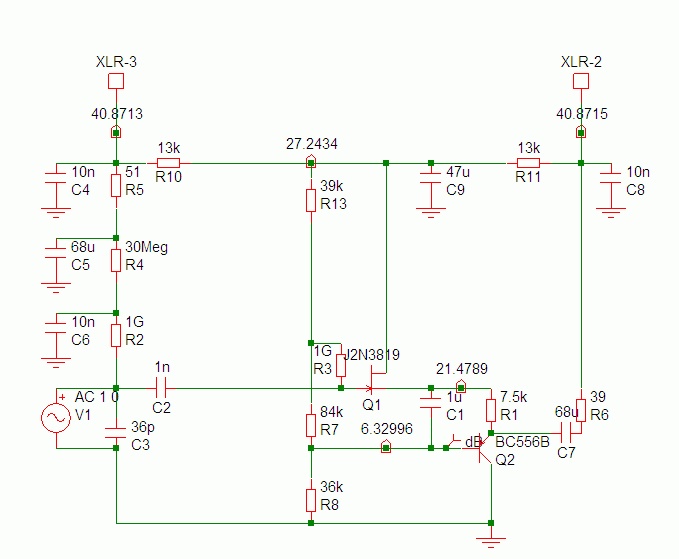clintrubber
Well-known member
My eye fell onto the PNP in this circuit:
http://www.sdiy.org/oid/mics/Oktava-MC-012.gif
The 1 uF cap makes it a push-pull.
The 7k5 seems to function as a source (/emitter) resistor for both devices at the same time.
More 'double functions': the capsule polarisation voltage is derived from pin#3 and at the same time 'a fake output' (impedance matched to 'the active output') is realized: the 51 & 30M resistors and the 68uF that both joins in mimicing the output impedance as well as smoothes the polaristion voltage (followed in this by the 10nF & 30M).
Bye,
Peter
http://www.sdiy.org/oid/mics/Oktava-MC-012.gif
The 1 uF cap makes it a push-pull.
The 7k5 seems to function as a source (/emitter) resistor for both devices at the same time.
More 'double functions': the capsule polarisation voltage is derived from pin#3 and at the same time 'a fake output' (impedance matched to 'the active output') is realized: the 51 & 30M resistors and the 68uF that both joins in mimicing the output impedance as well as smoothes the polaristion voltage (followed in this by the 10nF & 30M).
Bye,
Peter




